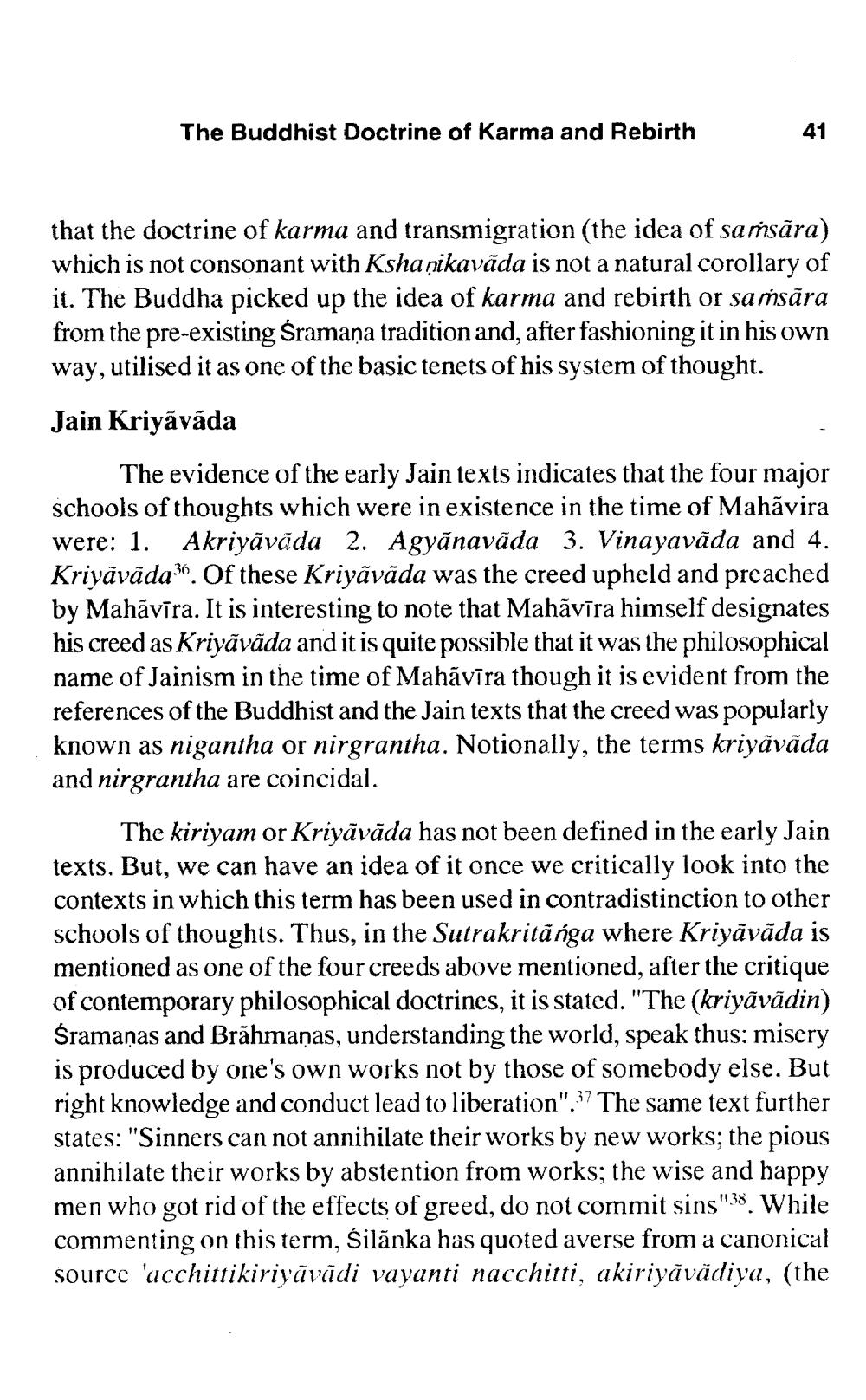________________
The Buddhist Doctrine of Karma and Rebirth
41
that the doctrine of karma and transmigration (the idea of saṁsāra) which is not consonant with Kshaṇikavāda is not a natural corollary of it. The Buddha picked up the idea of karma and rebirth or saṁsara from the pre-existing Śramana tradition and, after fashioning it in his own way, utilised it as one of the basic tenets of his system of thought.
Jain Kriyavada
The evidence of the early Jain texts indicates that the four major schools of thoughts which were in existence in the time of Mahavira were: 1. Akriyāvāda 2. Agyānavāda 3. Vinayavāda and 4. Kriyāvāda. Of these Kriyavada was the creed upheld and preached by Mahāvīra. It is interesting to note that Mahāvīra himself designates his creed as Kriyavada and it is quite possible that it was the philosophical name of Jainism in the time of Mahavīra though it is evident from the references of the Buddhist and the Jain texts that the creed was popularly known as nigantha or nirgrantha. Notionally, the terms kriyāvāda and nirgrantha are coincidal.
The kiriyam or Kriyavada has not been defined in the early Jain texts. But, we can have an idea of it once we critically look into the contexts in which this term has been used in contradistinction to other schools of thoughts. Thus, in the Sutrakritäńga where Kriyāvāda is mentioned as one of the four creeds above mentioned, after the critique of contemporary philosophical doctrines, it is stated. "The (kriyāvādin) Śramaṇas and Brāhmaṇas, understanding the world, speak thus: misery is produced by one's own works not by those of somebody else. But right knowledge and conduct lead to liberation".37 The same text further states: "Sinners can not annihilate their works by new works; the pious annihilate their works by abstention from works; the wise and happy men who got rid of the effects of greed, do not commit sins"38. While commenting on this term, Silanka has quoted averse from a canonical source 'acchittikiriyāvādi vayanti nacchitti, akiriyāvādiya, (the




